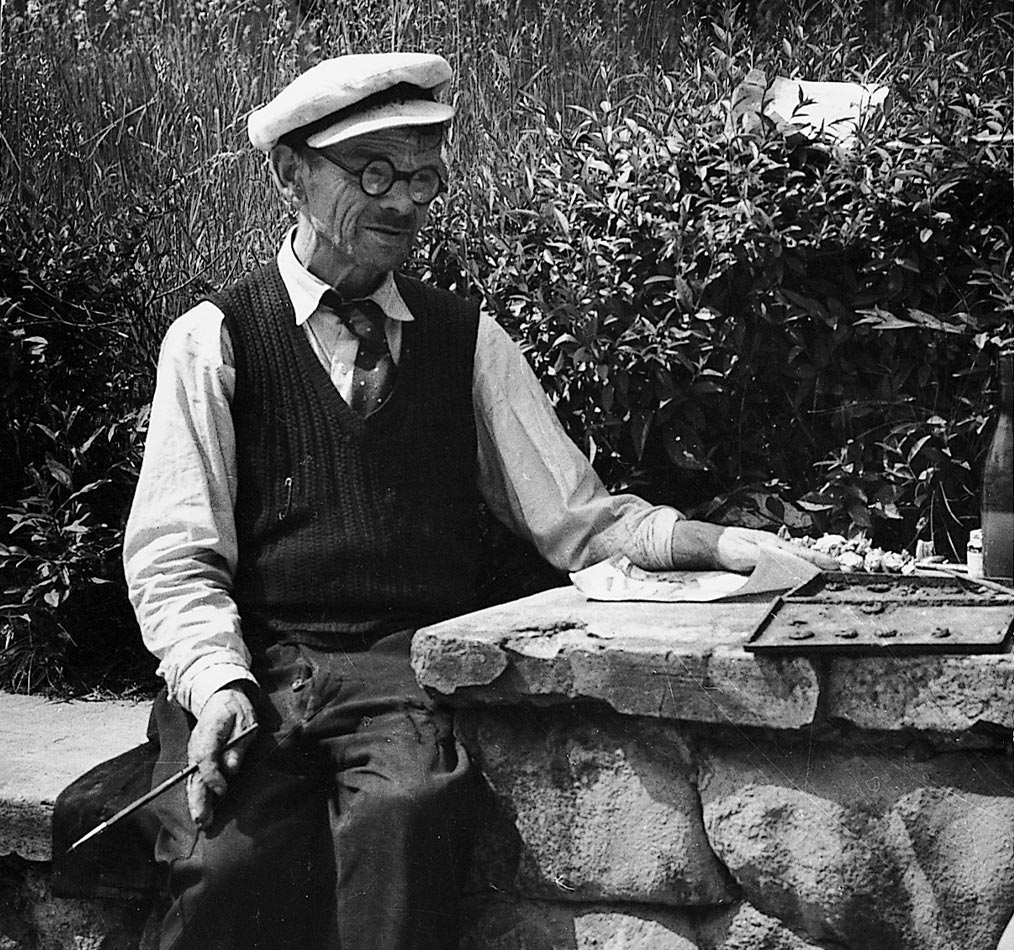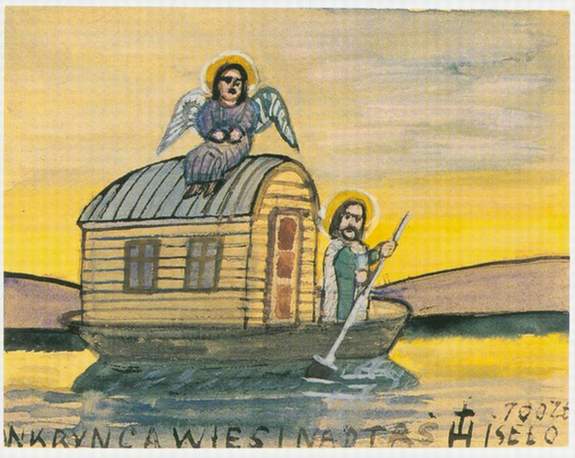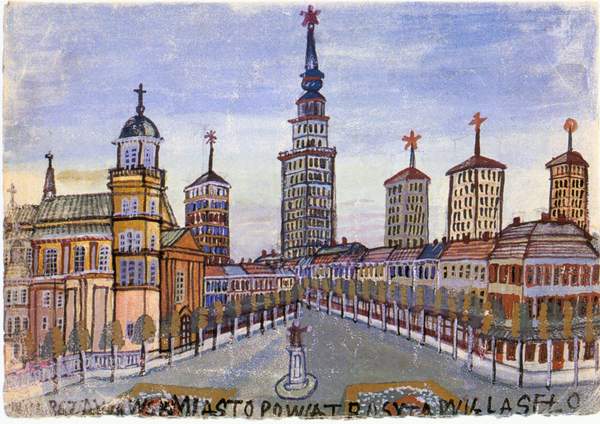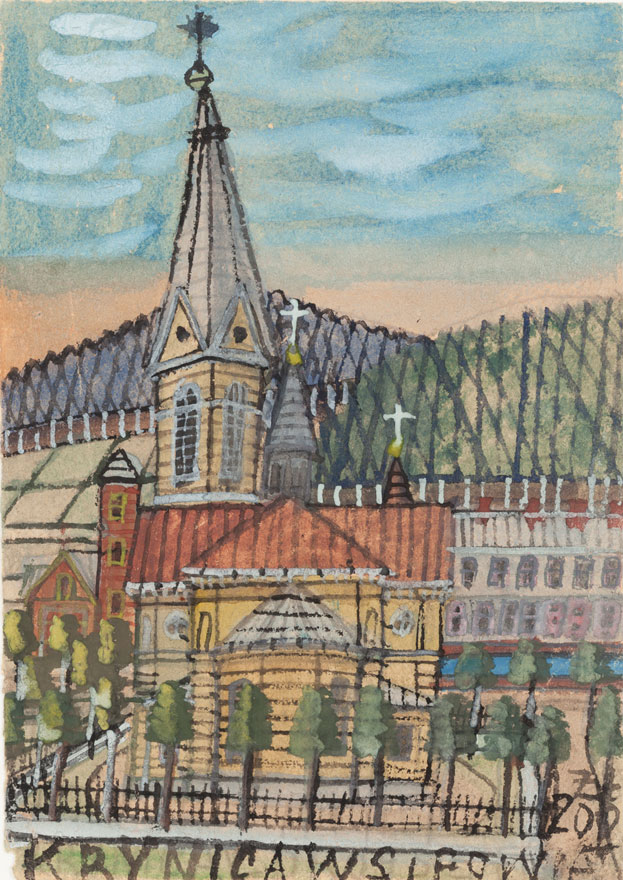Nikifor
1895–1968, Polish
Tags: Painting

Nikifor was born in Krynica, Poland. His real name is thought to be Epifan Drowniak. He descended from a Ukrainian tribe called Lemko, which incited the prejudice of some Polish citizens. He did not know his father, and his mother died while he was still young, leaving him destitute and further burdened by a speech impediment. Nikifor started painting when a doctor gave him a set of watercolors. By the age of thirteen, he was selling his paintings—made with watercolor, gouache, crayon, and later pencil on discarded paper and cigarette packs—on the street. He stamped the name “Nikifor-Matejko,” the surname of a famous Polish painter, on the back of his paintings.
Portfolio of Work
Click Arrows to View More Artwork
Traveling on foot and hopping trains, Nikifor explored Poland, observing the countryside, architecture, and religious practices, making sketches for thousands of mostly small-scale paintings. His source material included illustrations of Secession architecture that he collected. The structure of and the religious paintings inside Poland’s Orthodox and Catholic churches informed his visions of heaven and hell. Devoutly religious, he believed that artists, as creators, would have a special place in heaven. He painted himself as a bishop, judge, and artist.
Nikifor received some recognition for his work in the 1930s but generally lived in poverty. A few exhibitions were held in 1948. Ella and Andrzej Banach worked to exhibit Nikifor’s paintings in Paris and other European cities from 1959 to the early 1960s. On this occasion, established artist Marian Wlosinski, who worked for the communist state and housed Nikifor in his studio starting in 1960, helped him get a passport under the name Nikifor Krynicki, meaning “Nikifor from Krynica,” for his only trip abroad, in 1962. He attended a large retrospective of his work at Warsaw’s Zachęta Art Gallery, one of the country’s most important museums, in 1969. Nikifor died in Folusz and was buried in Krynica, where the Nikifor Museum opened in 1995.









